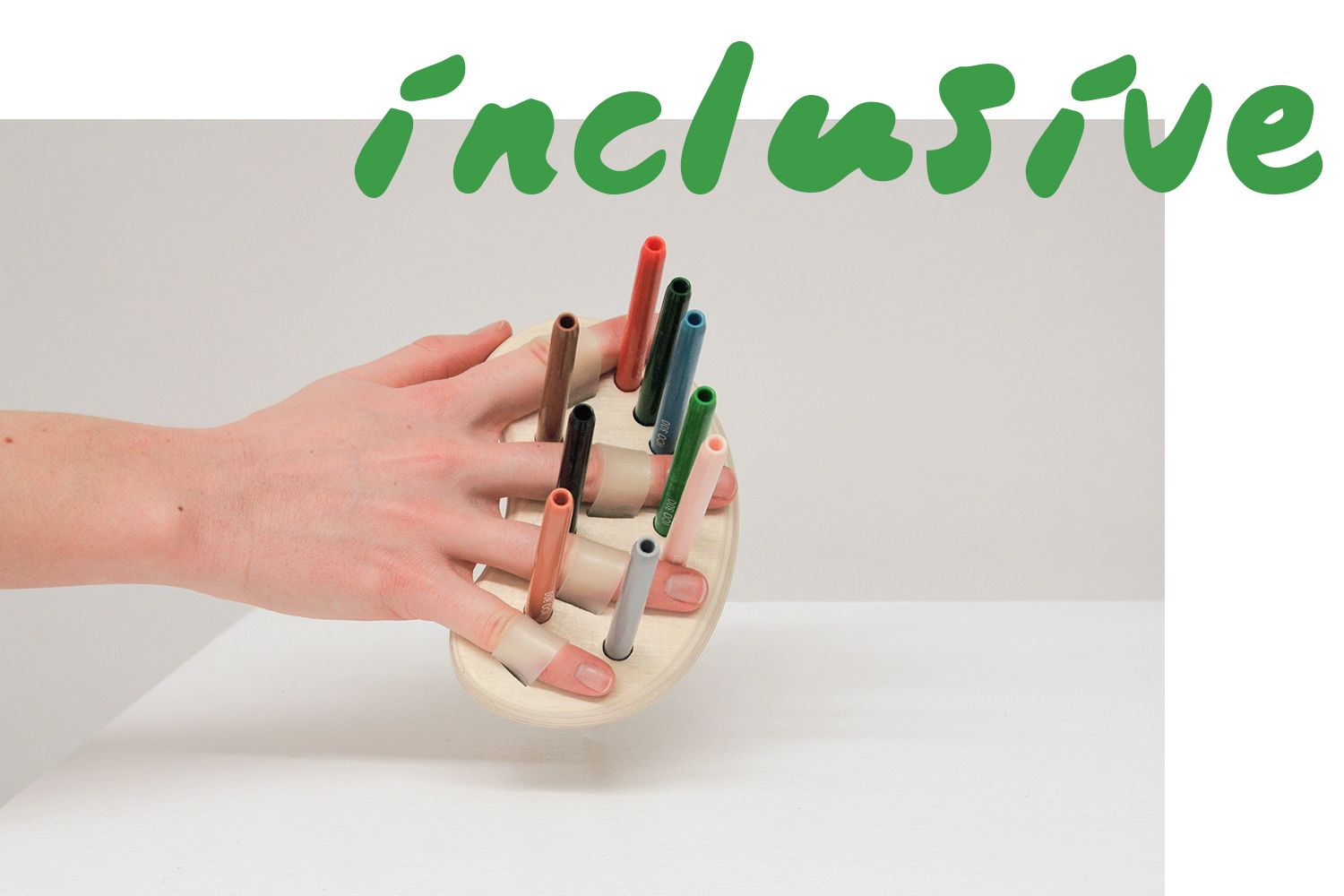Special drawing instruments that make self-expression possible and fun for physically disabled children, while also contributing to the development of the individual as therapeutic devices. The specially developed combo of tools – with which the students of the school are still creating today – was created in collaboration with Csillagház Elementary School, based on the needs of the children with multiple disabilities studying there.
Interview with jewelry designer Dóra Rea Kövér.
Your drawing tool set basically helps the pedagogical-educational and therapeutic work done in Csillagház: it was created for the art education class of the school. Exactly what concept are your pieces built around?
The acquisition of fine motor skills is hard for the children studying in Csillagház. I wanted to make experiencing things, such as grabbing pencils with their hands and drawing with them possible for them, too. The tools I have designed eave marks on large surfaces, in whatever way may we draw with them, there will be regular elements (parallel lines), and one can get a strong visual experience even with short period of concentration. Children can also visualize animals into the forms in an indirect manner.
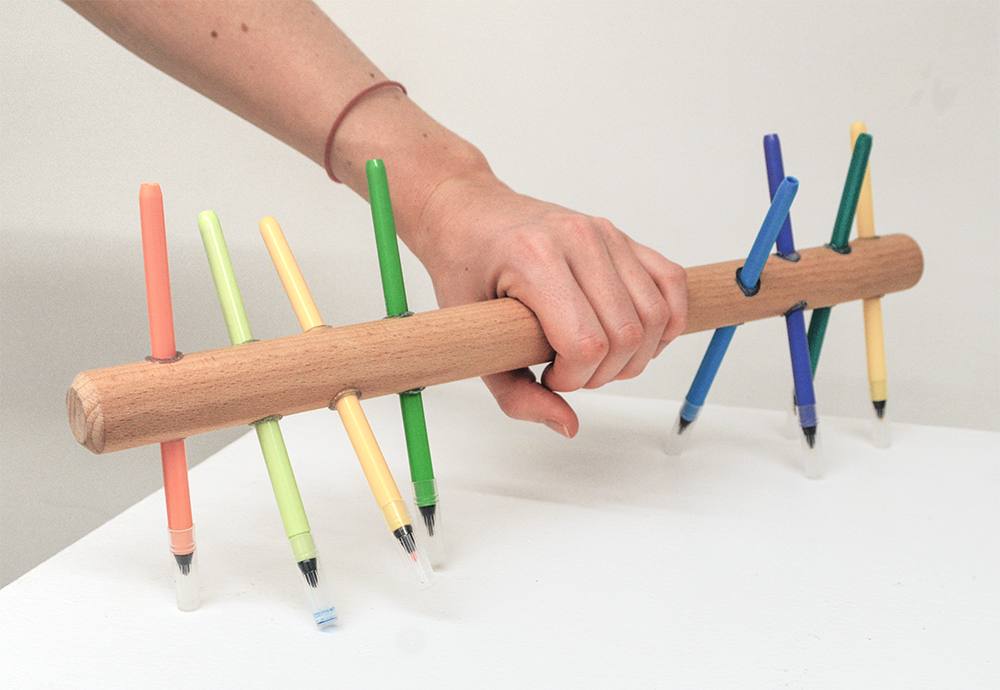
You have created three types of objects of different forms, in which 8 or even 24 pencils, pens or other drawing tools may be fixed at once in order to leave large-surface marks. Based on what practical experience did you choose these forms: what problems or deficiencies did you have to tackle? How did the design process go?
Dysfunction of fine motor skills not only cause problems with drawing lines, but already with trying to grab the given object – the children are admitted to Csillagház with different musculoskeletal and neurodegenerative diseases, so I had to create an inclusive object that can be used by as many students as possible. Another important aspect was the object’s “medical aid” nature, or the exclusion of the medical factor: although the tools serve such purpose expressly (stretching the fingers from spasmodic position), they can still remain playthings. During design, I consulted with both the children and teachers. The openness and professionalism of Anita Takár, the teacher of the complex art education class was a true help and had a very positive influence on my work.
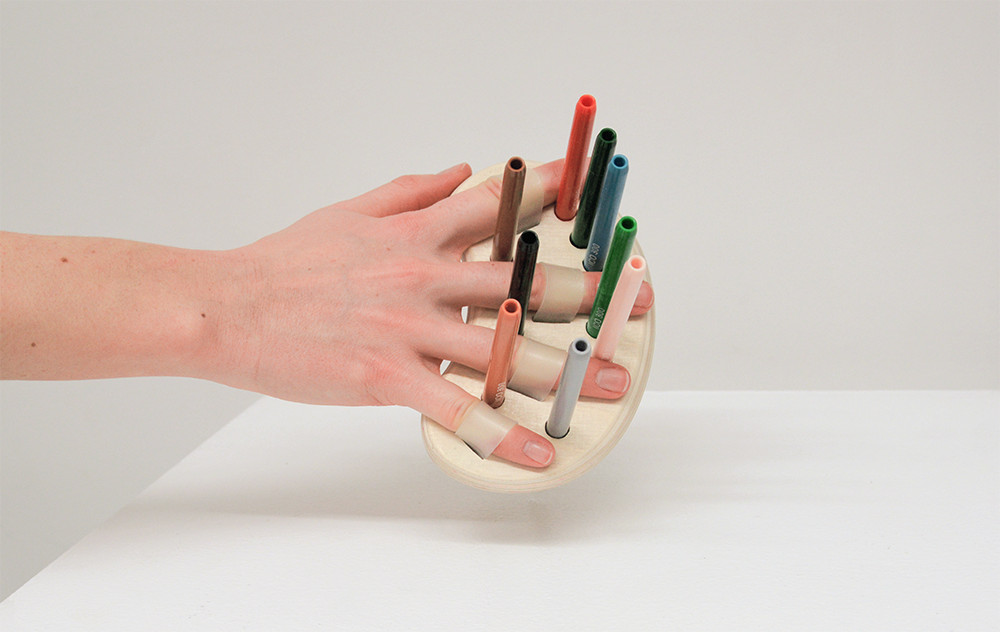

The aim of the course was not only to create specially developed therapeutic tools, but also to achieve specific results. What impact did the use of drawing tools have on the kids, what feedback did you receive from Csillagház Elementary School?
They like to draw with it, because it can be used simply and well. The three tools that I have created so far are only the “beta versions”, however, seeing that they work properly, I would like to continue working on them by all means. Teachers make booklets out of the children’s drawings, which they then sell at their own Christmas or Easter fairs to relatives and people interested.
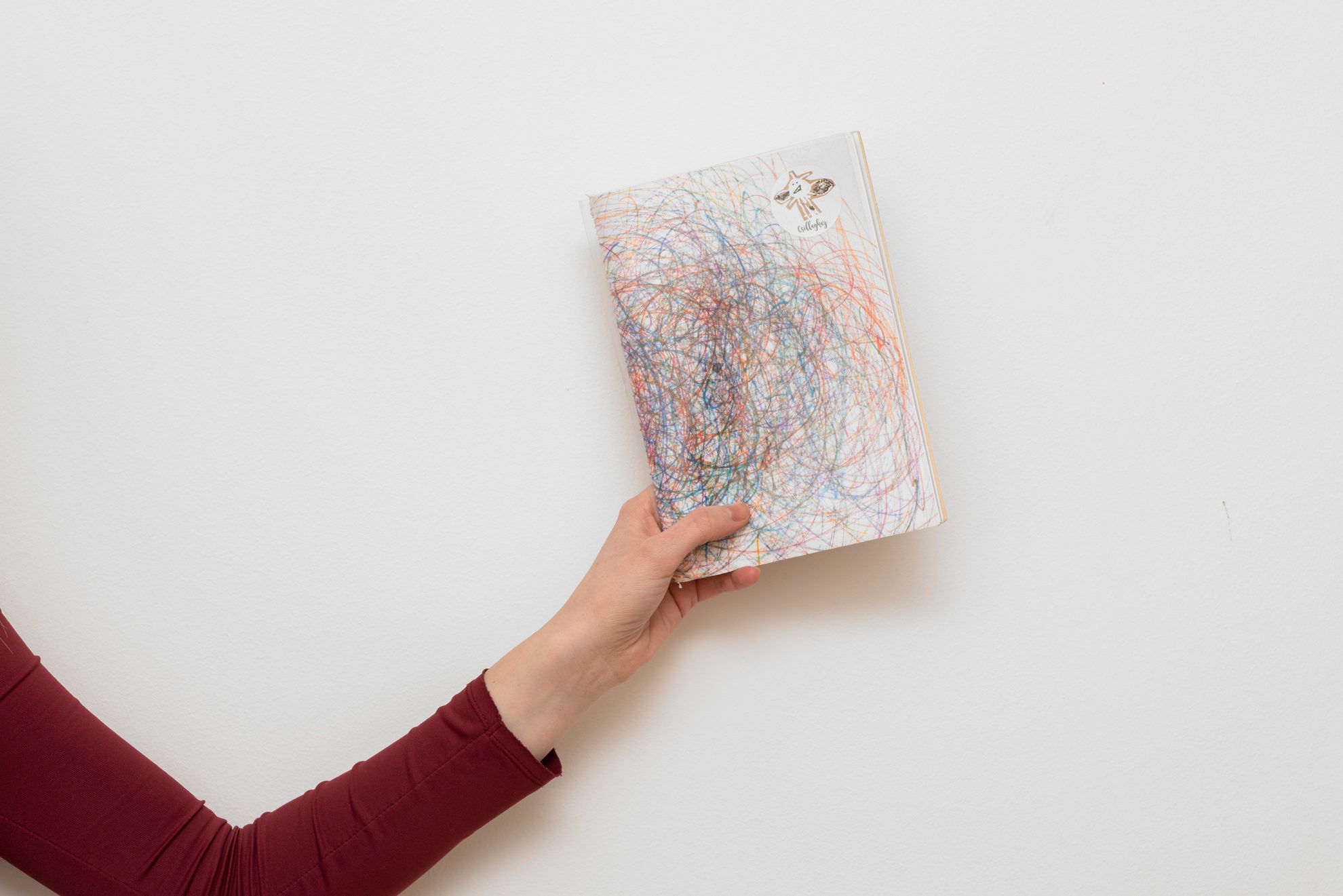

With the support of Csillagház, you can further develop the special drawing tool family. What changes do you plan in terms of form or functions?
The teachers who monitored the design process made some comments – these must be corrected by all means. Replacing the pencils could be easier, the tools could roll – I have many ideas that could make all this much better. Design progresses slowly, because I have to stop at every process, test with the children and then draw the conclusions – but it will be ready sooner or later.
You work as a jewelry designer originally. What inspired you to design the tools? Do you aspire to create more objects with similar concepts in the future?
I believe that the task of designers is to handle the different problems in the most open manner possible and to react to such problems with objects. My choosing jewelry as a medium in most cases is a personal preference, but I have many interests in current matters, if I can help with my pieces, if they reach their goal and if what I have come up with is good.
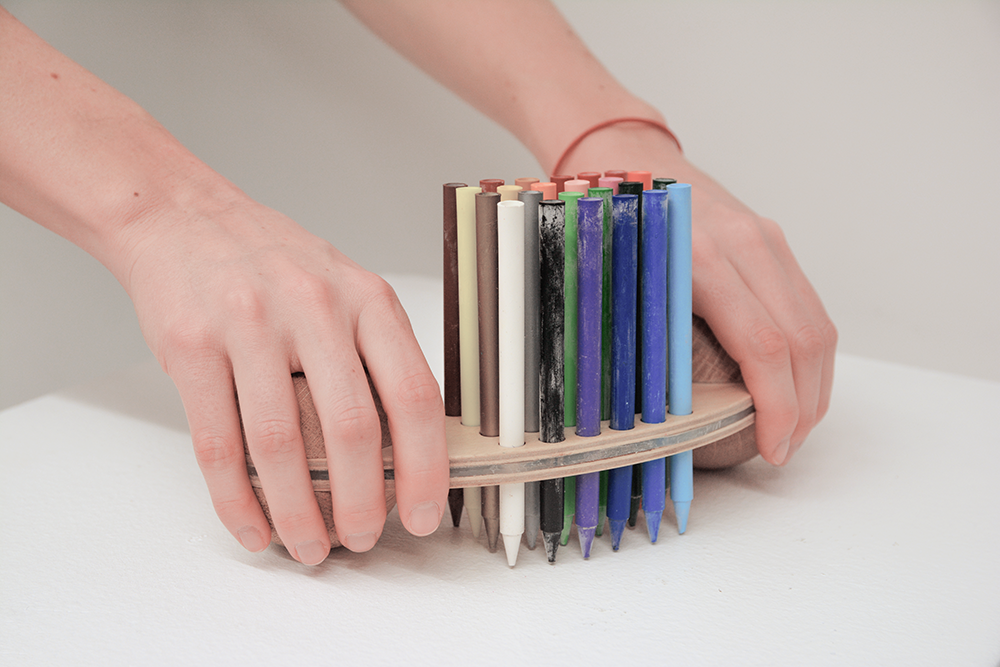
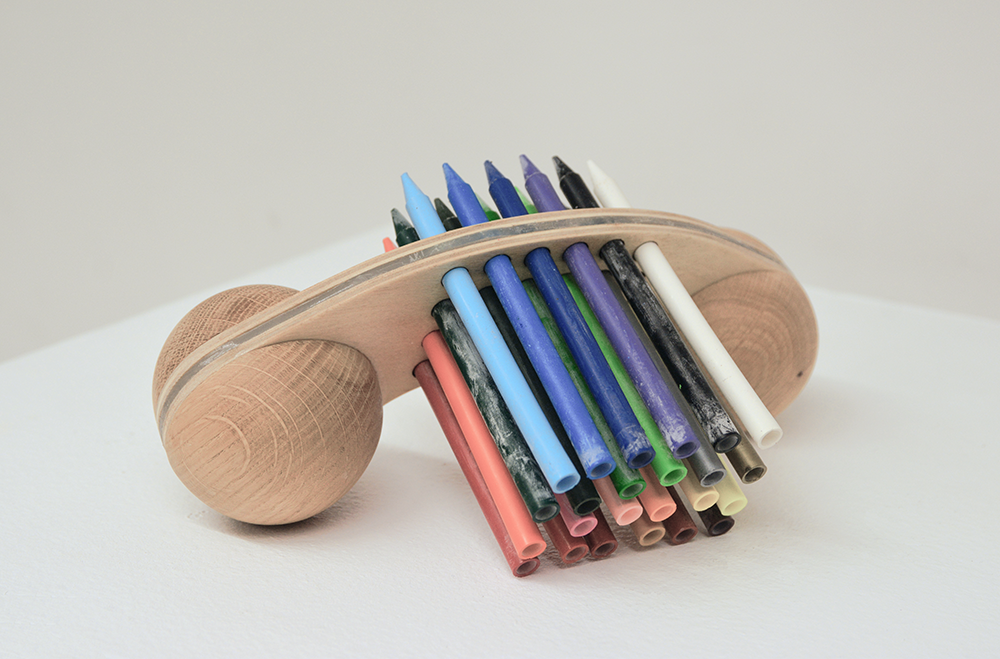
You can check out Rea’s other exciting works at her Facebook, Instagram or Behance profile.
The drawing tool set was realized in the framework of the Design for Care course.
The institutions participating in creating the course: Csillagház Elementary School, Digital Craft Lab, MOME Department of Design and Art, TransferLab
The teachers of MOME participating in the course: Fanni Csernátony, Renáta Dezső, Bálint Veres PhD
The INCLUSIVE article series is created in collaboration with MOME Transfer lab., the workshop of Moholy-Nagy University of Art and Design, which aims to call attention to the role of design in shaping our society.
MOME Transfer lab. (2012-2019) is an interdisciplinary research, creative and educational platform. It initiates activities along the passages and links between the different fields that promote the social visibility of people with disabilities and their self-determination through the means of inclusive design. The lab is a significant node of design promoting equal opportunities in Hungary.
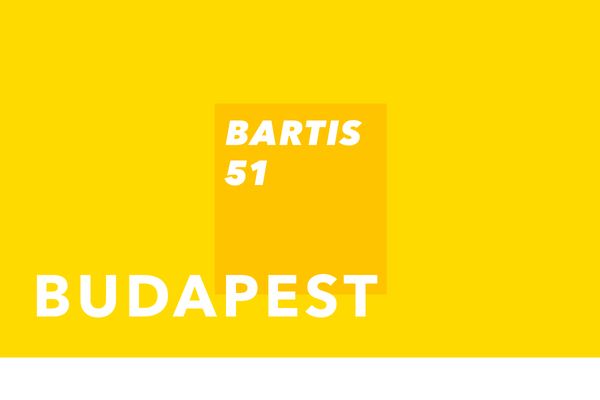
SQUARE-ANGLE – Attila Bartis
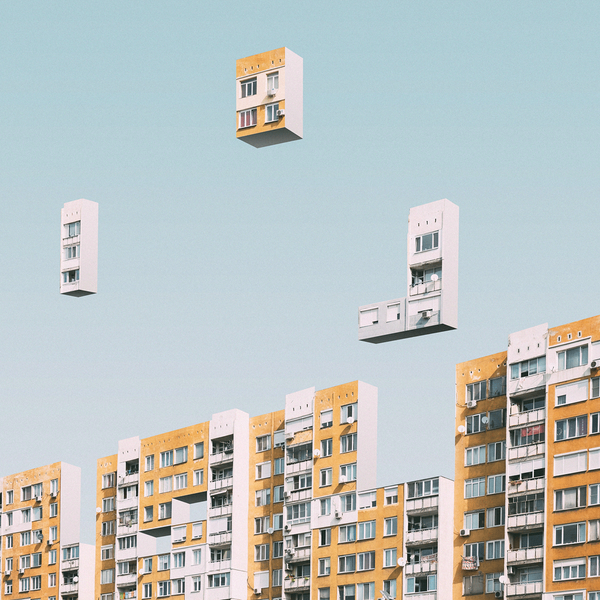
Abstract Tetris in Bulgaria










